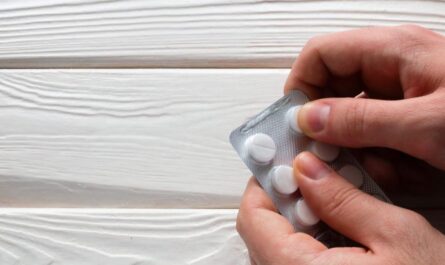
Mobility Equipment for Improved Daily Living
One of the most common types of at home medical devices needed is mobility devices. Whether short or long term needs, the right equipment can help patients regain independence. Walkers, canes and crutches are perfect for those recovering from injuries or surgery. They provide stability and distribute weight for safer movement. For those with arthritis or balance issues, a walker with a seat and storage basket is ideal for taking breaks. Scooters and power chairs give additional freedom to those with limited mobility. They allow for brisk outside trips or navigating large public areas. Wheelchairs offered manual or power options depending on individual abilities and needs. Choosing the proper size and features ensures maximum comfort and control.
Supportive Devices for Rest and Recovery
Another important category is supportive home medical equipment. Back braces, neck collars and ankle braces provide therapeutic relief for musculoskeletal issues. They properly align the body and restrict movements that cause pain. Heating pads, cold therapy packs and TENS units also soothe soreness. Inflatable pillows, mattress toppers and beds make resting and sleeping comfortable. Pressure relief mattresses reduce discomfort for those prone to bed sores. Hospital beds offer remote control operation of the head and leg sections. They make getting in and out of bed safe and simple. Breathing machines such as nebulizers and CPAP ensure lungs receive optimal air flow.
Monitoring Vital Signs for Better Health Oversight
Home patients appreciate equipment that allows self-monitoring of key health indicators. Blood pressure cuffs provide accurate readings with just the press of a button. Glucose meters efficiently check sugar levels for diabetes management. Pulse oximeters display oxygen saturation which is critical after lung infections. Scales display weight changes which doctors need to track. Thermometers update on potential signs of illness. Some models digitally store readings for appointments. Technology has introduced sophisticated home units that monitor multiple measurements simultaneously and even transmit to doctors wirelessly. This remote patient monitoring provides valuable health insight between visits.
First Aid and Wound Care Supplies
Having basic first aid supplies readily available offers peace of mind. Items like bandages, gauze, tape and antiseptic safely treat minor cuts, scrapes and blisters. Elastic wrapping supports sprains and strains during recovery. Hot/cold packs soothe minor injuries like bumps and bruises. For more severe medical conditions, quality wound care items aid the healing process. Special bandages address drainage, padding and protection of wounds and incisions. Some feature antibacterial properties. Pulse oximeter ensures adequate blood flow. Skin protectors safeguard sensitive areas from friction and shear. Seating cushions evenly distribute weight. All these supplies optimize the recovery environment at home.
Equipment Lending Options
Quality home medical equipment need not place a long-term financial burden on families. Many locations offer short term equipment rentals that are more affordable than purchases. Insurance policies may also cover rentals when medically necessary. Equipment vendors work directly with physicians to verify appropriate prescriptions. Rent-to-own programs make acquiring larger items attainable over time versus a lump sum. Consignment stores handle pre-owned goods at deep discounts. Equipment reuse is sustainable while still meeting needs. Local medical lending closets fill in gaps by loaning basic supplies in emergencies and between coverage periods. These flexible options increase equipment accessibility for varied budgets and circumstances.
Organizing for Safety and Convenience
With multiple medical products in the home, organization is key. Dedicated furniture pieces solve storage dilemmas. Over-the-door pouches, wall-mounted racks and rolling carts maintain order. Product labels and pictures streamline locating supplies during stressful times. Group items together by category for intuitive retrieval. Store rarely used equipment out of high traffic areas. Safety is also a concern. Brakes lock most mobility carts and wheelchairs in place. Transfer poles aid getting safely on and off elevated surfaces. Non-slip bath mats prevent falls in tubs. Sharps containers confine biohazard needles and blades. A first aid kit remains stocked and accessible in case of minor emergencies. With thoughtful organization, at home medical devices provides optimal support and security.
Ensuring Comfort through Ergonomics
Adjusting equipment for ideal ergonomics results in more restful use. Correct seat heights on chairs and mobility aids promote neutral postures. Armrest positioning maintains shoulders in a relaxed position. Chair and bed controls place within easy reach. Accessible electrical outlets avoid overextending cords. Contrasting colors aid visibility of controls at night. Inflating support surfaces evenly distributes pressure. Non-slip surfaces enhance stability during motion. Soft, removable cushions wick away moisture. User manuals provide proper body mechanics instructions. Consultations with medical professionals verify that all adjustments complement individual needs, abilities and comfort levels. Finetuning equipment setups promotes safer, healthier living at home.
With a diverse range of home medical equipment available, finding the right solutions has never been simpler. Speaking to representatives knowledgeable about products matching clinical needs makes the selection process effortless. Seeing demonstrations clarifies proper usage. Ongoing technical support guarantees equipment remains optimally configured. Home healthcare vendors aim to empower mobility, recovery and wellness through sophisticated yet user-friendly technology. Their role is ensuring patients receive comprehensive guidance that results in complete independence and satisfaction with in-home medical assistance.

